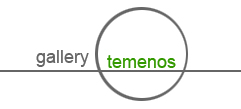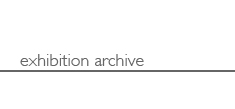This series, No One Was With Her When She Died, takes its title from the last line in E.B. White’s children’s book, Charlotte’s Web. After hearing a radio interview with White wherein he recounted the difficulty he had speaking those words for the audio book without breaking down, the phrase began to resonate. This was largely due to the poignancy of course, but also the nature of the language – its precise matter-of-factness coupled with an uneasy ambiguity. The phrase suggests an act or instance and infers the passage of an indefinite amount of time, which places it in relationship to a certain type of photographic thinking.
As well, this succinctly worded phrase promotes philosophical queries of Being in a manner that I find compelling. The language suggests that no one was with her which, rather than speaking of companionship, implies a very particular kind of absence that conjures an image of being in the midst of nothingness. Coupling this with the comingling of past and present time via the inclusion of was and when seems particularly apt within a phrase about mortality. Aligning these notions with the camera image in this work, I’ve deliberately emphasized the inability to truly fix a moment in time. When an instance becomes an image and passes by the lens, it dies immediately, forever removed from its specific position in space and time.
Unable to seize either instance or moment, I focus on stable stands of trees, suspended weeds and leaves, collections of dust, dew and debris on plastic, wood and glass, where only a peripheral glimpse is held within an endless optical flow. These materials speak to a type of impermanence, momentarily forming a situation that hovers just long enough to form an image, while remaining simultaneously banal and metaphoric. Relying upon a serial form, I create multi-panel photographs and video works that ask the viewer to repeatedly consider their perceptive response to subtle changes occurring within similar or identical imagery presented in sequence or series. This structure purposefully unravels the act of presentation, emphasizing the nature of each image as always already a representation. No One Was With Her When She Died is a collective image of loss and failure, and of the delicate beauty within. |
Dawn Roe (MFA, Illinois State University, BFA, Marylhurst University), divides her time between Asheville, North Carolina and Winter Park, Florida where she serves as Assistant Professor of Art at Rollins College. Her studio practice involves the singular and combined use of still photographs and digital video and relies upon the mimetic nature of these media to activate and make visible perceptual inconsistencies between experienced and recorded time.
Roe's recently completed project, Goldfields, was exhibited as a triple-screen installation in Melbourne, VIC, Australia at Screen Space Gallery (2012) and later traveled to The White Box at The University of Oregon PDX, Portland, OR (2013). A multi-media exhibition of this work will open the fall season at The Clara M. Eagle Gallery at Murray State University, Murray, KY (2013). Her works have also been exhibited at The Perth Centre for Photography, Perth, WA, Australia (2013), The Detroit Center for Contemporary Photography, Detroit, MI, The Light Factory Contemporary Museum of Photography and Film, Charlotte, NC (2012) Violet Poe Projects, Bloomington, IL, Beam Contemporary, Melbourne, VIC, Australia, Launch Projects, Toronto, ON, Canada (2011), Orlando Museum of Art, Orlando, FL, The Museum of Fine Arts, Florida State University, Tallahassee, FL (2010), Newspace Center for Photography, Portland, OR (2009), and other venues throughout the U.S. and abroad.
Roe has received funding for her work from various organizations including The Associated Colleges of the South/Andrew W. Mellon Foundation, The United Arts of Central Florida, The Chicago Department of Cultural Affairs and The Society for Photographic Education. She was recently awarded a public art commission from the Broward County Division of Cultural Affairs, which will result in the production of a suite of artworks for the Fort Lauderdale-Hollywood International Airport.
Roe's work and writing has been featured in the the online journals Oxford American, One One Thousand, fototazo and Urbanautica (for which she also serves as an editor), as well as numerous on-line magazines and blogs such as Fraction Magazine, F-STOP Magazine, Mull It Over, The Latent Image, New Landscape Photography, Light Leaked and Methods of Being. A collaborative essay on the Goldfields project with Leigh-Ann Pahapill and Lisa Zaher is soon to be published in the Routledge print journal, Photographies. Roe recently founded the public art project window (re/production | re/presentation) and serves as the curator.
http://dawnroe.com |





